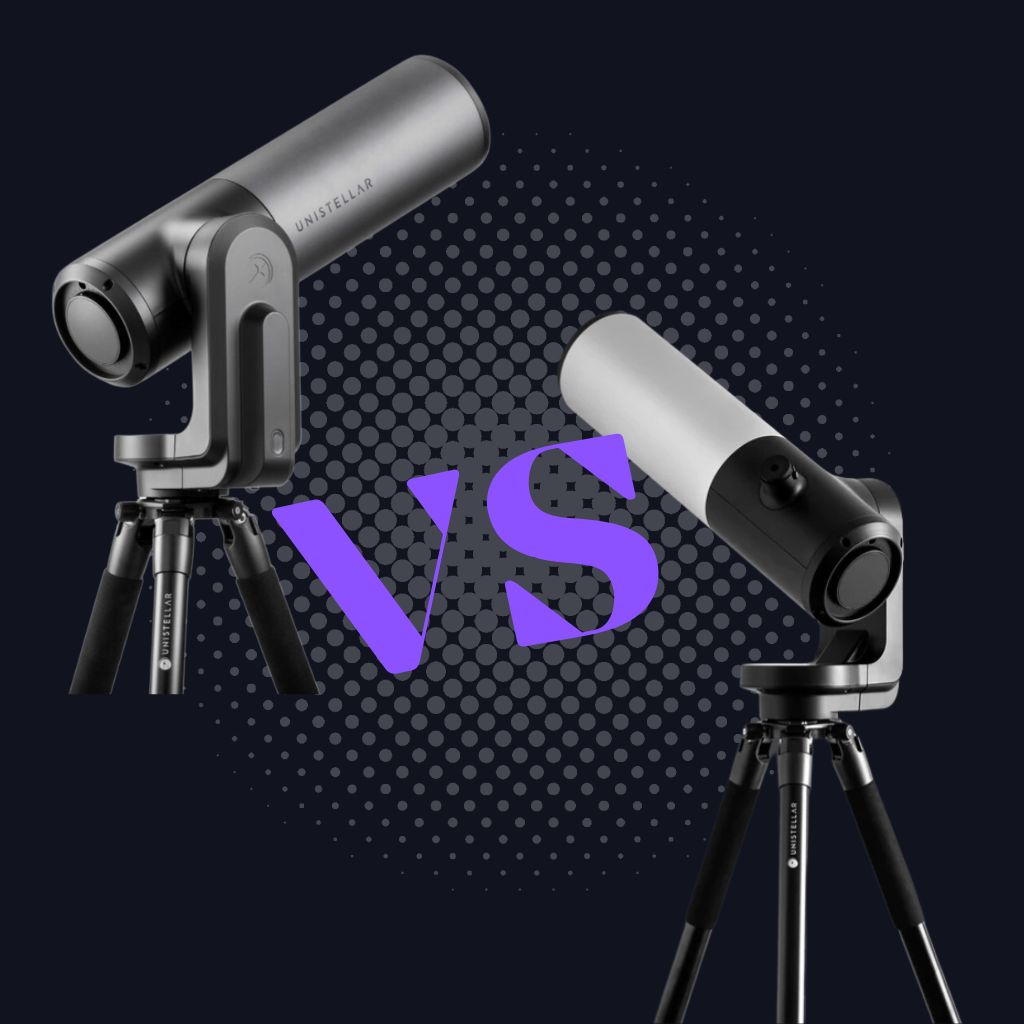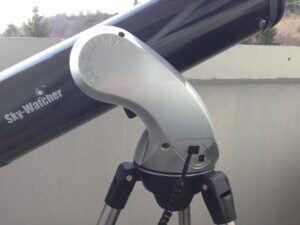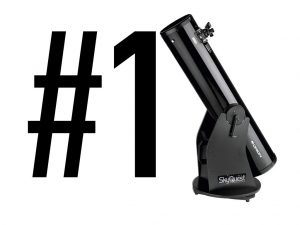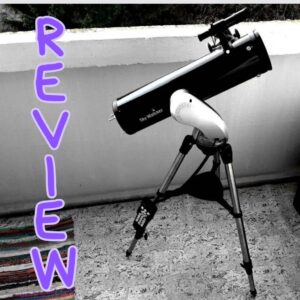This site contains affiliate links to products. I may receive a commission for purchases made through these links.
As people become more interested in astronomy, the demand for high-quality telescopes has also risen. This has led to the development of numerous telescopes with different features and capabilities, making it challenging for amateur astronomers to decide which one to buy.
The eVscope 2 and eQuinox Telescope are two of the most popular choices among stargazers, and they are both from Unistellar.
These trend-disrupting telescopes have various benefits and limitations, making it important to understand their differences and how they can impact your stargazing experience.
In this article, we’ll compare and contrast the eVscope 2 and Equinox telescopes, highlighting their unique features, pros, and cons.
eVscope 2 features & specifications
The eVscope 2 is a Unistellar telescope, and it boasts a range of advanced features and impressive specifications.
Here are some of them:
Compact design and ease of use
The eVscope 2 is designed with portability in mind, making it easy to carry around and set up in various locations. It is also user-friendly, with an intuitive interface that allows even beginners to locate and observe celestial objects quickly.
It comes with a built-in battery that provides up to 10 hours of battery life, allowing you to stargaze without the need for external power sources.
Advanced technology
eVscope 2 uses advanced technology to enhance your stargazing experience. It employs a unique combination of optics and electronics to provide a live view of deep-sky objects in real-time.
This is made possible by the Enhanced Vision technology, which collects and processes light from distant celestial objects to create a detailed image on the eVscope’s screen.
The eVscope 2 has advanced the Nikon eyepiece technology field, ensuring users can view objects with great clarity and detail.
Portability and convenience
The eVscope 2 is designed with convenience in mind, featuring a compact and lightweight design that allows for easy transportation and storage.
It comes with a built-in Wi-Fi module that enables you to control the telescope using your smartphone or tablet.
This feature allows you to adjust the telescope’s settings, capture images and videos, and share your observations with friends and family.
Great optics and magnification
The eVscope 2 comes with a 114mm aperture and a focal length of 450mm, which provides a wide field of view and allows for detailed observation of celestial objects.
It has an optical magnification range of 50x to 120x and a digital magnification of up to 400x, enabling you to observe objects at varying distances.
The eVscope 2 also features a light-gathering power that is equivalent to a 450mm aperture traditional telescope, making it an ideal choice for deep-sky observation.
You may also like: Telescope Magnification: Beginners Guide W/ Examples
Image capture and sharing
The eVscope 2 comes with an Integrated Intelligent Image Processing to help you capture high-quality images and videos of your observations.
It also features a shareable database of astronomical objects, enabling you to share your findings with other eVscope users worldwide.
Dedicated mobile app
The telescope also comes with a mobile app that allows you to control the telescope, capture images and videos, and share your observations
The mobile application suggests the most visually appealing celestial objects to observe and enables you to gain knowledge and recognize astronomical entities.
eQuinox features & specifications
The eQuinox telescope has remarkable features and specifications. Here are some of them:
Good optics and magnification
The eQuinox Telescope features high-quality optics that provide clear and crisp night sky images.
It features a magnification range of 40x to 225x, allowing you to observe objects at varying distances.
Advanced Nikon eyepiece technology fields are integrated into both the eQuinox, providing users with exceptional clarity and detail when observing objects.
Sturdy build
The eQuinox Telescope is built to last, with a sturdy frame that provides stability and support for the telescope’s optics. It comes with an adjustable tripod that allows you to set the telescope to your desired viewing height.
The telescope’s mount features slow-motion controls that enable you to track moving celestial objects smoothly.
Portability and convenience
eQuinox Telescope features a relatively lightweight design that allows for easy transportation. The telescope comes with a carrying case that makes it easy to transport, and its compact design means it won’t take up too much space in your vehicle.
The telescope’s mount and tripod can be easily disassembled and reassembled, making it convenient for storage.
Smartphone app
The eQuinox telescope also comes with a smartphone app that allows for easy control and tracking of celestial objects. The app can be downloaded for free and is compatible with both iOS and Android devices.
It provides a user-friendly interface that allows users to control the telescope’s movements, adjust settings, and even view live images on their phone screen.
3 differences between eVscope 2 and eQuinox
Here are some of the key differences between the eVscope 2 and the eQuinox Telescope:
1. eVscope 2 is more expensive than eQuinox
The eVscope 2 is priced at a higher range compared to the eQuinox. This is partly due to the advanced technology and features integrated into the eVscope 2 but also reflects the higher quality of its optics and materials.
Considering the price difference, if you are on a tight budget, the eQuinox might be a more practical option for you.
2. eVscope 2 has a wider objective lens diameter than eQuinox
The eVscope 2 and eQuinox both have impressive magnification capabilities, with an optical magnification of 50x and a digital magnification of up to 400x.
This makes them suitable for observing distant objects with clarity. However, the eVscope 2 has an advantage over the Equinox in terms of field of view (FOV), which refers to the area visible through the telescope.
A higher FOV provides more details about the surrounding space, and the eVscope 2 has a wider objective lens diameter, resulting in a higher FOV.
3. eVscope 2 is more portable than the eQuinox Telescope
The eVscope 2 is designed to be highly portable, with a compact and lightweight body that is easy to transport and set up. The eQuinox Telescope, while still relatively lightweight, is bulkier and less portable due to its larger size and traditional design.
eVscope 2 Pros and Cons
The eVscope 2 is a highly advanced and innovative smart telescope that offers a range of benefits to amateur astronomers and astrophotography enthusiasts.
Let’s discuss the pros and cons of the eVscope 2.
Pros of eVscope 2
Here are some of the pros of this digital telescope:
Advanced technology
The eVscope 2 is equipped with advanced technology, including a built-in computer system, machine learning algorithms, and a high-sensitivity CMOS camera that enables users to capture high-quality images and videos of celestial objects.
Easy to use
The eVscope 2 is designed to be user-friendly and accessible to amateur astronomers and astrophotography enthusiasts.
It can be controlled remotely using a smartphone or tablet, and the intuitive interface makes it easy to operate and adjust.
Compact and portable
The eVscope 2 is relatively compact and portable, making it easy to transport and set up in different locations.
It also comes with a protective carrying case, making it easy to store and transport safely.
Reduces light pollution
The eVscope 2 features Unistellar’s proprietary algorithms that effectively mitigate the effects of light pollution, resulting in clear and detailed observations of far-off objects.
Cons of eVscope 2
Here are some of the cons of eVscope 2:
High cost
The eVscope 2 is a high-end product with a relatively high price tag, which may make it inaccessible to some amateur astronomers and astrophotography enthusiasts.
Limited customization
While the eVscope 2 offers advanced technology and features, it may not be as customizable as some other telescopes on the market. This may be a drawback for more experienced users who prefer to have greater control over the telescope’s settings and features.
eQuinox pros and cons
The eQuinox offers a range of benefits. Let’s discuss the pros and cons of the telescope.
Pros of the eQuinox telescope
Here are some of the pros of the telescope:
Affordability
The eQuinox Telescope is relatively affordable compared to other telescopes on the market, making it accessible to a wide range of amateur astronomers and astrophotography enthusiasts.
Customizable
The eQuinoxTelescope is highly customizable, allowing users to adjust and fine-tune the telescope’s settings and features to suit their specific needs and preferences.
Cons of the eQuinox telescope
Here are the cons of the eQuinox telescope:
Issues with the software
The telescope’s software is its biggest drawback. The user manual provided with the scope didn’t match the software available on the Play Store, making it confusing to learn how to use.
The software also freezes occasionally, requiring a restart. This causes the scope to return to the ‘park’ position, ruining your viewing experience.
It’s also difficult to switch between live view and catalog mode, which can be frustrating.
Can you take good pictures with eVscope/eQuinox?
Both eVscope and eQuinox are capable of taking good pictures of celestial objects. However, the image quality may vary depending on the specific model and the camera’s quality.
The eVscope 2, in particular, is equipped with a high-sensitivity CMOS camera that can capture high-quality images and videos of celestial objects, while the Unistellar eVscope eQuinox telescope may require an external camera and computer for image and video capture and processing.
eVscope 2 and eQuinox, which one’s for you?
If you’re looking for a compact, all-in-one telescope that’s easy to use and can capture high-quality images and videos of celestial objects, the eVscope 2 may be the right choice for you.
Its built-in computer makes it a powerful and convenient option for observing the night sky and capturing stunning astrophotography.
On the other hand, if you’re looking for a more traditional telescope that offers more customization and flexibility, the eQuinox may be a better fit.
With its interchangeable eyepieces, lenses, and filters, it can be customized to suit a wide range of observation and photography needs.
It also offers more precise control over the positioning and tracking of celestial objects, making it a great choice for more advanced astronomy enthusiasts.
However, deciding whether to choose the eVscope 2 or the Unistellar eVscope eQuinox telescope ultimately depends on your individual needs, preferences, and budget.
Both telescopes have their own unique advantages and drawbacks, so it’s important to carefully evaluate each option before making a decision.
The best telescope for you will depend on your specific needs, interests, and budget.
It’s recommended to go thorough research and read reviews from other users before deciding to select a telescope that meets your needs and provides you with the best possible viewing and photography experience.
How to collimate an eVscope or eQuinox telescope
Here is a step-by-step guide on how to collimate an eVscope or Unistellar eVscope eQuinox telescope:
Step 1: Set up the telescope
The first step is to set up your telescope in a suitable location with a clear view of the night sky.
Make sure the telescope is securely mounted on a tripod or other stable surface and that it’s pointed at a distant object, such as a star or planet.
Step 2: Adjust the primary mirror
The next step is to adjust the primary mirror, which is the large mirror located at the bottom of the telescope.
To do this, use a collimation tool to adjust the alignment of the primary mirror.
The tool should be inserted into the eyepiece holder and adjusted until it’s centered on the primary mirror.
Step 3: Adjust the secondary mirror
Next, you’ll need to adjust the secondary mirror located at the top of the telescope.
This can be done by adjusting the screws or knobs located on the secondary mirror holder.
Use the collimation tool to adjust the position of the secondary mirror until it’s centered on the primary mirror.
Step 4: Check the alignment
Once you’ve adjusted both mirrors, it’s important to check the alignment to ensure everything is properly collimated.
To do this, remove the collimation tool from the eyepiece holder and replace it with an eyepiece.
Look through the eyepiece to see if the image is clear and focused. If it’s not, you may need to make additional adjustments to the mirrors until the image is properly aligned.
Step 5: Test the telescope
After collimating the telescope, it’s a good idea to test it on some celestial objects to ensure everything works properly.
Choose a bright star or planet and observe it through the telescope to see if the image is clear and in focus.
If everything looks good, you’re ready to start observing and taking astrophotography with your eVscope or Unistellar eVscope eQuinox telescope.
FAQs about smart telescopes
Here are some frequently asked questions about smart telescopes:
Is the eVscope 2 a good telescope?
The eVscope 2 is a good telescope that offers high-quality images and advanced features for both beginners and experienced astronomers.
It has a compact design, portability, and an integrated camera that allows you to capture images of deep-sky objects in just a few seconds.
What size of the sensor in the eVscope 2?
The eVscope 2 features a 7.7MP image sensor, which is larger than the one found in the original eVscope. The larger sensor size allows for better image quality and increased sensitivity in low-light conditions.
What is the resolution of eVscope 2?
The eVscope 2 has a resolution of 2048 x 1536 pixels (H/V), which translates to 3 megapixels. While this may not seem like much compared to a traditional camera, it is more than enough for astronomical observations and astrophotography.
What is the focal length of the eVscope 2?
The eVscope 2 has a focal length of 450mm, which is relatively short compared to traditional telescopes. However, this design allows for a wider field of view, making it easier to locate objects in the night sky.
Which is better, Stellina or eVscope?
Both the Stellina and eVscope offer unique features and capabilities, making it difficult to determine which is better.
Stellina and eVscope have unique features and specifications that make them suitable for different needs.
The Stellina has a higher resolution sensor than the eVscope, which allows for better-quality images.
On the other hand, the eVscope has a larger aperture and longer focal length than the Stellina, which means it can capture more light and provide more detailed images.
The eVscope also has a unique feature called “Enhanced Vision,” which allows users to see more details in the objects they observe.
You can read more on this here: Which Is Better: eVscope or Stellina? (Answered!)
DWARF 2 vs eQuinox 2 vs eVscope 2 vs Stellina vs Vespera, what are the differences?
DWARF 2, eQuinox 2, eVscope 2, Stellina, and Vespera are smart telescopes that have unique features and specifications.
- The DWARF 2 is a compact telescope designed for portability and ease of use. It has a 24mm aperture and a 100mm focal length, which makes it suitable for observing bright objects such as the Moon, planets, and stars.
- The eQuinox2 is a computerized telescope with a 114mm aperture and a 450mm focal length. It comes with a GoTo mount, making it easy to locate objects in the night sky. It also has a built-in camera for astrophotography.
- The eVscope 2 is a smart telescope with a 114mm aperture and a 450mm focal length. It has a unique feature called “Enhanced Vision,” which allows users to see more details in the objects they observe.
- The Stellina is a smart telescope that has an 80mm aperture and a 400mm focal length. It has a high-resolution camera that allows for high-quality astrophotography. The Stellina also features a wide field of view, which makes it easy to locate objects in the night sky.
- The Vespera is a portable smart telescope with a 50mm aperture and a 200mm focal length. It comes with a built-in camera for astrophotography and a compact design that makes it easy to transport.
In summary, the key differences between these smart telescopes are their aperture size, focal length, portability, and camera specifications. Depending on your needs and preferences, one of these telescopes may be more suitable for you than the others.
What smart telescope is the most powerful?
The eVscope 2 is considered one of the most powerful smart telescopes available, with advanced features such as automatic pointing, tracking, and imaging capabilities.
However, other smart telescopes, such as the Stellina and Vespera, also offer impressive performance.
Smart telescopes and GoTo / computerized telescopes, what are the key differences?
Smart telescopes and GoTo/computerized telescopes both offer automated features that make it easier to locate and track celestial objects.
However, smart telescopes typically have more advanced features, such as built-in cameras and image processing software, while GoTo telescopes often rely on external devices such as laptops or smartphones to operate.
Takeaway: eVscope 2 and eQuinox are great for capturing views of celestial and deep sky objects
The eVscope 2 and Equinox are hybrid smart telescopes that use digital technology to provide higher resolution images.
Unistellar telescope’s smart light pollution reduction technology is a game-changer for stargazing enthusiasts, allowing for clear views of distant objects even in light-polluted areas.
While the eVscope 2 has its strengths in its compact design, ease of use, and advanced features like automatic alignment and field detection, the eQuinox has a greater ability to gather light.
It is essential to consider factors like portability, image quality, ease of use, and compatibility with different devices before making a purchase.
You may also like:






